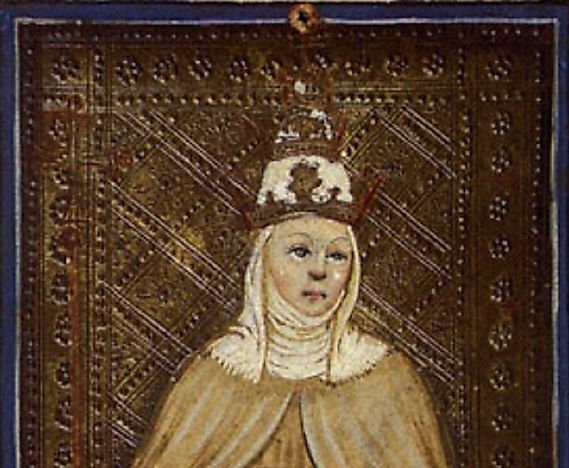Was Pope Joan, The Female Pope, A Real Person Or Just A Myth?
The
strange tale of the alleged Pope "Joan" has fascinated
people since the Middle Ages.
 Depiction of an alleged female Pope, or
"Popess", on a 15th Century tarot card.
Depiction of an alleged female Pope, or
"Popess", on a 15th Century tarot card.
Chronicle of Metz
The first
we hear of ‘Pope Joan’ is from the 13th Century writings of
Dominican chronicler Jean de Mailley. He describes an unnamed pope
not recorded among the Bishops of Rome because it was a woman
disguised as a man. Mailley records that because of her character
and talents, she attained an education and joined the Church of
Rome, where she grew to the rank of cardinal before becoming pope.
Mailley goes on to say that the grave of this pope was inscribed
with a Latin phrase, Petre, Pater Patrum, Papisse Prodito Partum”.
It translates to “O Peter, Father of Fathers, betray the
childbearing of the woman pope”. But Mailley begins the narrative
with the infinitive ‘Require’, meaning the story needs
verification.
Later Versions of the Tale
The next
we hear of the female pope is in the Chronica minor by an
unknown Franciscan friar and in the writings of the Dominican
preacher, Etienne de Bourbon. While both accounts are similar, de
Bourbon gives details about her death. He relates that the ‘pope’
was pregnant during her papacy and began to have contractions during
a papal procession to the Church of the Lateran. When the people
realized the ‘pope’ was giving birth, they tied her to a horse
and dragged her till she was killed. Subsequent popes avoided the
street, which was named Vicus Papissa, or the street of the female
pope.
Martinus Polonus's Account
The most
influential narrative of the female pope comes from the 16th Century
Chronicle of Popes and Emperors by another Dominican. Polonus was
well-connected to the Roman monarchy and his work was widely
circulated. Polonus provides a more vivid picture of the life of
Pope Joan. His story for the first time tells of such a legendary
woman that is identified, and has her papacy placed in a historical
context. According to Polonus, Joan was an Englishwoman who was born
in Mainz (Germany). She reigned for more than two years as John VIII
between the pontificates of Leo IV (847-855) and Benedict III
(855-858). However, the chronicler’s sources are sketchy and his
narrative has an uncertain tone. Some even claim that Joan’s story
was added to the chronicle after the author’s death.
Pope Joan in Art
Later
versions of the story became more elaborate. One stated that the
‘pope’ was not killed but was deposed and did penance for many
years under confinement. She was buried in Ostia where her son was a
bishop. Since all accounts of Pope Joan do not have any historical
authenticity, modern scholars dismiss her as a myth. There are still
others who find traces of her existence in numerous pieces of art.
Bernini’s Baldachin in St. Peter’s Basilica contains seven
female sculptures whose facial features are interpreted as those of
a woman in labor, and there are eight coinciding sculptures of a
newborn or young child. But the same statues can have totally
different meanings. Most people think the sculptures represent the
niece of Pope Urban VIII who was in labor when Bernini was working
on the canopy. Pope Joan has also been depicted in plays and films.
Just An Urban Myth?
While Pope
Joan has no historical authenticity, existing records deny her very
existence. It is impossible that the phenomenon of a ‘popess’
would have gone unrecorded from the Ninth through Thirteenth
Centuries. Further, Joan cannot be inserted between Leo IV and
Benedict III because the latter was elected pope immediately after
the death of the former. Many people think that the legend of
the"Popess" may have historical origins, such as in the
effeminate weakness of Pope John VIII (872-882) in dealing with
Constantinople. Some historians believe the degradation of the
papacy in the 10th Century, when many popes were called John, may
have given rise to the fable. However, fiction or history, the idea
of a female pope disguised as a man will continue to titillate
popular imagination.
No comments:
Post a Comment